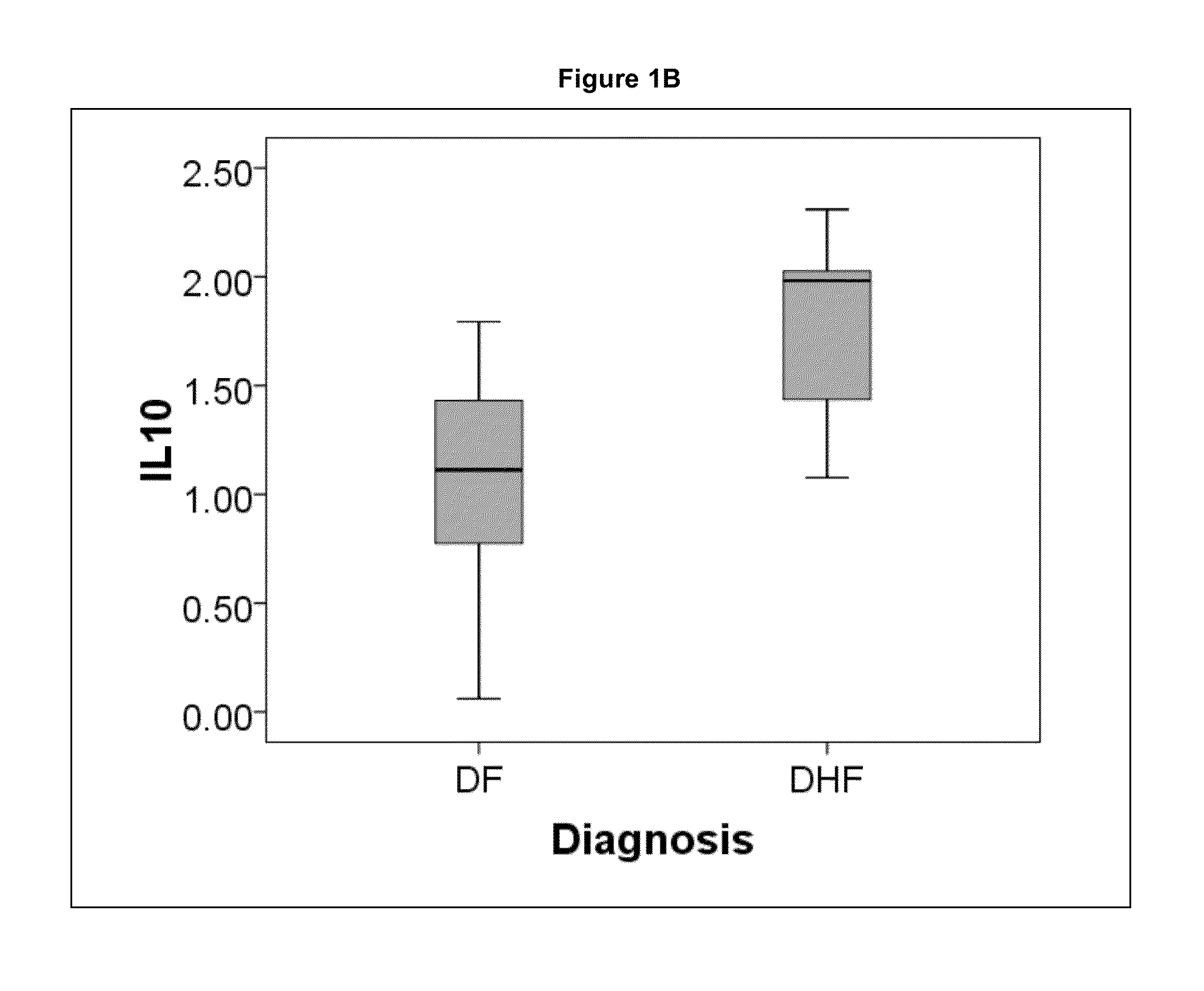Methods and Biomarkers for the Detection of Dengue Hemorrhagic Fever
a biomarker and dengue hemorrhagic fever technology, applied in the field of methods and biomarkers for the detection of dengue hemorrhagic fever, can solve the problems of limiting the routine application of these tests, no dhf drug therapy or vaccine, and 5 billion people at risk of dengu
- Summary
- Abstract
- Description
- Claims
- Application Information
AI Technical Summary
Benefits of technology
Problems solved by technology
Method used
Image
Examples
example 1
Identification of Biomarkers of DHF and Nonparametric DHF Modeling
[0044]To identify differentially expressed proteins associated with DHF, a reproducible, novel pre-separation fractionation method is developed, and is termed the biofluid analysis platform (BAP). BAP takes advantage of high recovery and quantitative size exclusion fractionation, followed by quantitative saturation fluorescence labeling, two dimensional gel electrophoresis (2-DE), and LC-MS / MS (liquid chromatography-tandem mass spectrometry) protein identification to identify differentially expressed proteins associated with DHF.
[0045]Plasma samples from 53 volunteers (42 DF and 13 DHF) with initial clinical presentation of dengue infection were obtained and subjected to focused and discovery-based proteomic using ELISA and BAP.
[0046]Demographics, clinical laboratory measurements, 9 cytokines and 419 plasma proteins at the time of initial presentation were compared between the outcomes of dengue fever and dengue hemor...
example 2
DHF MARS Detection Model Validation
[0070]The performance of the MARS predictor of DHF was assessed using several approaches. First, the overall accuracy of the model on the data set was analyzed by minimizing classification error using cross-validation. The model accuracy produced 100% accuracy for both DHF and DF classification (Table IV(B)). Another evaluation of the model performance is seen by analysis of the area under the Receiver Operating Characteristic (ROC) curve (AUC), where Sensitivity vs. one-Specificity was plotted. In the ROC analysis, a diagonal line starting at zero indicated that the output was a random guess, whereas an ideal classifier with a high true positive rate and low false positive rate will curve positively and strongly towards the upper left quadrant of the plot (21). The AUC is equivalent to the probability that two cases, one chosen at random from each group, are correctly ordered by the classifier (22). In the DHF MARS model, an AUC of 1.000 is seen (...
example 3
Linear Model for DHF Prediction
[0077]Although the nonparametric modeling method of example 2 has achieved great accuracy in identifying dengue infected patients who are at risk for developing DHF, the clinical application of this biomarker panel will require development of accurate methods for quantification of modified plasma proteins that can be adapted and disseminated into clinical laboratories, especially in those endemic areas. Therefore, it is important to have an early DHF detection model that is based solely on the combinations of clinical and accessible laboratory tests.
Sample Collection and Preparation
[0078]An active surveillance for dengue diseases study was conducted in Maracay, Venezuela. Subjects are enrolled if presented with a new fever equal to or greater than 38° C. accompanied by two or more of the signs and symptoms consistent with dengue virus infection including: myalgia, arthralgia, leucopenia, rash, headache, lymphoadenopathy, nausea, vomiting, positive tour...
PUM
 Login to View More
Login to View More Abstract
Description
Claims
Application Information
 Login to View More
Login to View More - R&D
- Intellectual Property
- Life Sciences
- Materials
- Tech Scout
- Unparalleled Data Quality
- Higher Quality Content
- 60% Fewer Hallucinations
Browse by: Latest US Patents, China's latest patents, Technical Efficacy Thesaurus, Application Domain, Technology Topic, Popular Technical Reports.
© 2025 PatSnap. All rights reserved.Legal|Privacy policy|Modern Slavery Act Transparency Statement|Sitemap|About US| Contact US: help@patsnap.com



